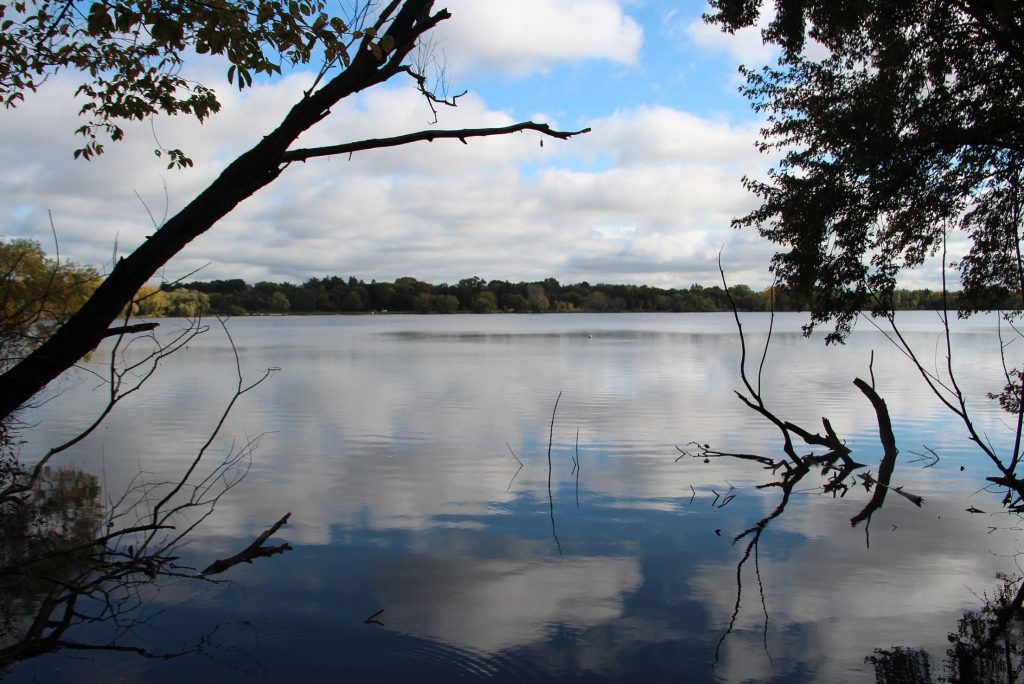
Last fall, white flags and then white poles started popping up throughout the park, and some now have leaves growing out the top of the tube.
These poles are young tree saplings protected by a tube that are part of a research partnership between the University of Minnesota Department of Forest Resources and the Minneapolis Park and Recreation Board and part of the board’s ongoing efforts to diversify the urban forest. Some of the trees planted were propagated from Minneapolis Heritage Trees at the U of M tree nursery, and others a unique species that we are unable to typically obtain from commercial nurseries.
What the tubes do
The tubes, while awkward looking in the landscape, serve several important functions in helping these trees be successful.
- The tubes protect the saplings from grazing by animals.
- The tubes function as a mini-greenhouse, encouraging straight growth with fewer low branches as well as encourages a strong central leader.
- The tubes are very visible to park users and equipment operators so the saplings are less likely to be stepped on or cut down during routine mowing and park use.
Trees planted by this method
Here’s a list of the trees planted in the parks via this method:
- American Mountain Ash
- American Sycamore
- Bitternut Hickory
- Bur Oak
- Catalpa
- Crimson Sunset Maple
- Disease Resistant Elms (multiple types)
- English Oak
- Horse Chestnut*
- London Planetree
- Pin Oak
- Redbud*
- Scholar Tree*
- White Oak*
*Progeny of a Heritage Tree, trees that have been determined to be very large, very old, and/or are an important part of our history or culture in the city.
In partnership with the University of Minnesota research team and the Minneapolis Park and Recreation Board the Friends of Lake Nokomis is helping to coordinate a Community Science Project with the tube trees planted in the park.
Training sessions coming soon
Two educational training sessions have been scheduled with Chad Giblin from the University of Minnesota Department of Forestry Resources:
September 16 at 5 p. m.
September 30 at 6:30 p.m.
Each session will follow the same format; a high level overview of the project followed by training on how to care for the trees and collect data. Anyone can attend the educational training sessions, individuals interested in participating should be able to check on the trees monthly during the growing season and during the winter months on an ad-hoc basis to ensure the tubes and net coverings remain in place. This project will be an ongoing, multi-year collaboration that will continue until the trees are of a size that allows for their maintenance to be transferred to the MPRB Forestry Department.
Examples of maintenance participants will perform in addition to data collection:
(1) Weed around grow tubes. Keeping a 3 foot diameter circle that’s vegetation-free and mulched will help the tree by reducing competition and help the maintenance workers by allowing them more berth with the mowers.
(2) During dry spells each tree would really benefit from one or two buckets of water each week.
(3) Pull deep mulch away from tubes to avoid the closure of the bottom. Mowers sometimes push mulch up against the bottom of the tube and can close the opening causing problems with the base of the tree.
This project is an excellent opportunity for neighbors of the park and their families to nurture the urban forest for future generations of Minneapolitans and we hope you’ll join us in this endeavor!